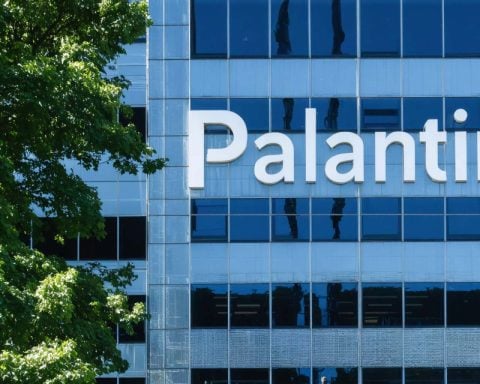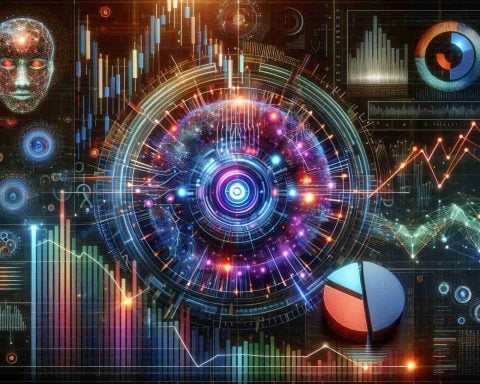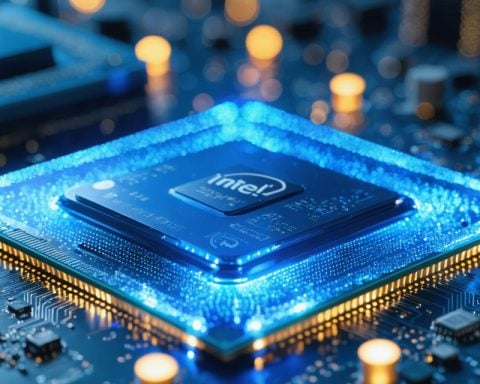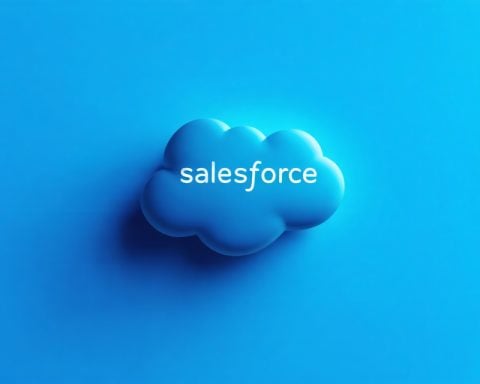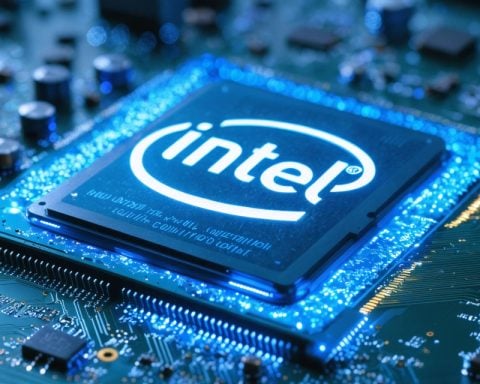- South Korea plans to acquire 10,000 high-performance GPUs, bolstering its national AI ecosystem.
- The United States intensifies its strategic position by restricting AI tech exports to certain countries, creating a divided global AI landscape.
- Elon Musk introduces Grok 3, a powerful AI model, and “Deep Search,” aiming to revolutionize information retrieval.
- Arista Networks Inc (NYSE:ANET) gains attention for its cloud networking solutions, with potential growth in the data center sector.
- In the dynamic AI sector, success relies on agility and foresight, benefiting nations, companies, and investors who anticipate market shifts.
The global stage is heating up as nations and tech powerhouses vie for dominance in artificial intelligence. In a strategic move, South Korea plans to secure 10,000 high-performance GPUs. This initiative exemplifies a broader push toward national AI ecosystems, where countries strive to fortify their technological capabilities. In contrast, the United States sharpens its competitive edge, imposing new regulations to restrict AI tech exports to specific nations, effectively bifurcating the global AI landscape.
Amidst these geopolitical maneuvers, industry giants make bold strides. Elon Musk, with characteristic bravado, unveils Grok 3, a formidable AI model poised to outclass benchmarks from OpenAI. Musk’s team is not stopping there. They launch “Deep Search,” promising a groundbreaking evolution in information retrieval. Such innovations underscore the relentless creativity driving the sector.
Simultaneously, stock analysts keep a watchful eye on key players like Arista Networks Inc (NYSE:ANET). With its cloud networking solutions gaining traction, Arista garners attention on Wall Street. Analysts highlight its untapped potential within the data center realm. Despite its promise, Arista shares hover under the radar, awaiting a pivotal expansion of its customer base.
In this rapidly shifting AI arena, the takeaway is clear: Success hinges on agility and foresight. From nations laying the infrastructure for future innovation to tech titans relentlessly pushing the boundaries, the AI landscape rewards those who anticipate the next turn in this exhilarating race. As investors and enthusiasts, remaining attuned to these developments could unlock substantial opportunities in the ever-evolving world of artificial intelligence.
The AI Power Play: Strategic Moves and Emerging Opportunities
How-To Steps & Life Hacks: Securing High-Performance GPUs
For nations and businesses looking to secure high-performance GPUs like South Korea, here are key steps:
1. Identify Requirements: Determine the specific AI and ML tasks you aim to accomplish, which will dictate your GPU needs.
2. Market Research: Investigate available GPU models from leading manufacturers like NVIDIA and AMD. Assess their performance benchmarks.
3. Vendor Relationships: Establish partnerships with reliable suppliers to ensure a steady supply, considering global semiconductor chip shortages.
4. Budget Management: Allocate funds not just for purchase but also for long-term maintenance and potential upgrades.
5. Infrastructure Readiness: Ensure that data centers can support new hardware in terms of power, cooling, and physical space.
Real-World Use Cases: AI Implementation
– Healthcare: AI can revolutionize medical diagnostics by analyzing vast datasets for patterns, predicting patient outcomes, and automating routine tasks.
– Finance: AI in algorithmic trading, fraud detection, and personalized customer service improves efficiency and security.
– Manufacturing: Predictive maintenance and process optimization are made feasible by AI, cutting costs and improving output quality.
Market Forecasts & Industry Trends
– Growth Projections: The AI market is expected to grow at a CAGR of over 40% over the next five years, driven by demand in automation and data analytics.
– AI as a Service: Many companies are moving toward offering AI solutions as a service (AIaaS), similar to cloud services.
– Edge AI: Growth in edge computing is pushing AI processing closer to data sources, enhancing real-time analytics.
Reviews & Comparisons: Grok 3 vs. OpenAI Benchmarks
– Performance: Initial reviews suggest Grok 3 demonstrates superior performance in select tasks over current OpenAI models.
– Scalability: Grok 3 offers robust scaling capabilities catering to a broader range of industries and applications.
Controversies & Limitations
– Regulation: U.S. export restrictions highlight geopolitical tensions that could split global AI development into divergent paths.
– Ethical Concerns: Privacy and bias in AI algorithms continue to spark debate about the responsible use of AI technologies.
Features, Specs & Pricing: Deep Search
– Powerful Retrieval: “Deep Search” promises advanced search capabilities using AI for more accurate and context-aware results.
– Cost Considerations: Pricing models remain opaque, often customized based on enterprise needs, including data size and complexity.
Security & Sustainability
– Risk Mitigation: Companies must safeguard AI systems against cyber threats and data breaches as they become integral components of infrastructure.
– Sustainable Practices: Investing in energy-efficient GPUs and optimizing algorithms for minimal computational load reduces environmental impact.
Insights & Predictions
– AI Democratization: As costs lower and off-the-shelf solutions improve, small to medium-sized enterprises gain greater access to AI tools.
– Convergence of Technologies: AI will increasingly integrate with IoT, blockchain, and quantum computing to unlock new functionalities.
Tutorials & Compatibility
– When integrating new AI technologies like Grok 3 and Deep Search, utilize comprehensive tutorials provided by developers for seamless deployment.
Pros & Cons Overview
Pros:
– Enhanced capabilities and scalability with new AI models like Grok 3.
– Opportunities for innovation across sectors from strategic chipset acquisitions.
Cons:
– Geopolitical tensions could create barriers to technology exchange.
– Continual ethical challenges around AI privacy and bias.
Actionable Recommendations
– Stay Informed: Regularly update knowledge on GPU technologies and evolving AI systems through reputable tech journals and industry reports.
– Network Strategically: Connect with industry professionals through AI-focused conferences to explore collaborations and learn about best practices.
– Pilot Innovations: Test the latest AI tools on smaller projects to evaluate performance and feasibility before large-scale implementation.
For more updated information, you can visit TechCrunch or WIRED.




